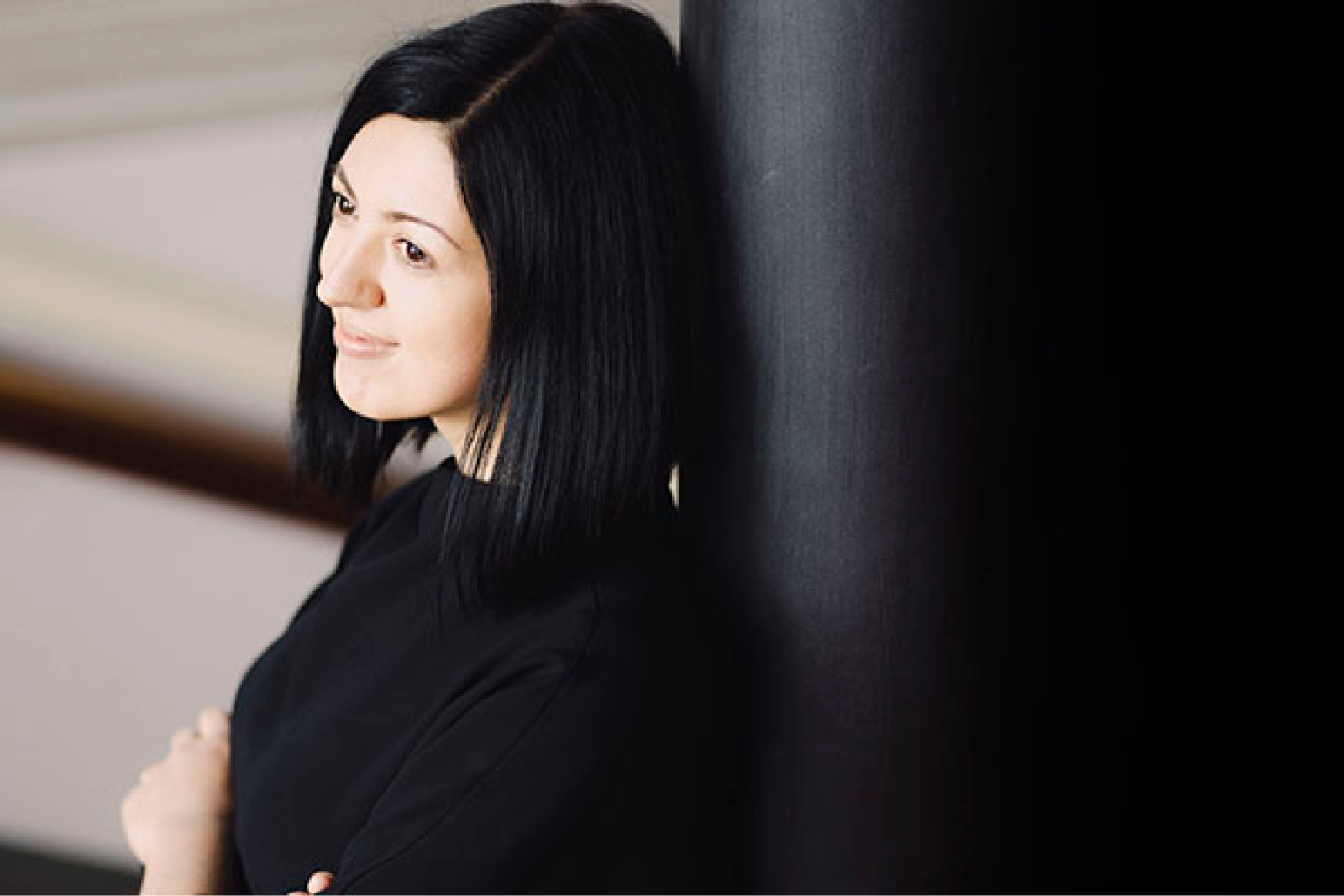Before the Sydney Opera House opened in 1973, the Sydney Symphony Orchestra gave concerts in the Sydney Town Hall. They have returned occasionally since then, and are resident this year while the Opera House Concert Hall is being refurbished. The Town Hall auditorium is spacious, crowned visually by the world famous organ, with a high ceiling. As a result, the acoustic is ‘wet’ and detail can get lost in the resonance. (Sound in there is a nightmare when microphones are involved.) On the plus side, and it is a major plus, at last we can clearly hear the bass end of the spectrum. In the Concert Hall, the bass never cut through enough to anchor harmonies (a problem that is even worse in the Joan Sutherland Opera Theatre). Both the advantages and, to a lesser extent, disadvantages of the Town Hall acoustic were noticeable at this concert.
 Alexandra Dariescu. Photo © Marco Borggreve
Alexandra Dariescu. Photo © Marco Borggreve
Maurice Ravel’s G Major Piano Concerto (the one for two hands) opened the program, featuring the Romanian-born British pianist Alexandra Dariescu. With her formidable technique, expressive approach and delightful stage presence, Dariescu wowed the audience. (Her two encores, including Villa-Lobos’s Polichinelle, were stunning.) She treated the Ravel Concerto in a Romantic manner, expressively shaping lyrical themes, attacking rhythmic passages as if they were by Bartók, and generally playing down the jazz flavour. In the languid second movement, she played the long opening solo like a vocal aria, very effectively, but when it came to the later decorative work she adopted the contemporary habit of stressing individual notes and employing a wide range of dynamics. In doing so, several of the quiet notes were lost in the ether of the hall. In my view, the music does not need so much applied nuance. Simplicity and evenness in the decorative passages works better; the piano is only a part of the texture at that point. (Incidentally, the cor anglais solo in this section was beautifully played by Alexandre Oguey.)
Then we came to the third movement, marked Presto by the composer (not Prestissimo). There is a tendency among young pianists to go like a rocket in this piece, and it is undeniably impressive when they manage it, but Ravel knew what he was doing: he also wrote rapid solos for various orchestral instruments, and that is what should dictate the tempo. None of the SSO players fell behind, but when it feels rushed all sense of fun is lost. This is a divertissement, not the world land speed record. (Speed is what ruins Yuja Wang’s over-praised performance. If you go back to iconic recordings of a previous generation – Michelangeli or Katchen, say – you get a sense of enjoyment and relaxation, which is surely what Ravel intended.) Dariescu hurtled through it with technical aplomb, while conductor Jun Märkl proved to be an attentive and expert accompanist.
Märkl came into his own in the second half. His conducting was clear and detailed, meticulous even, and the orchestral balance he achieved was impeccable. They gave a superb performance of Mendelssohn’s Hebrides Overture. Depicting Fingal’s Cave on the windswept Scottish coast, this piece is as much a seascape as Debussy’s La Mer: various moods of the ocean are conveyed, including the rise and fall of great surging waves. A moment of exquisite calm just before the conclusion (with solo clarinet) had the audience holding their breath, it was so ideally paced. (I hate to belabour this, but that atmospheric moment would not have registered so strongly in the Concert Hall.)
Märkl is no stranger to Debussy, having recorded all the French master’s orchestral works with the Lyon National Orchestra for Naxos, and his authority showed in this excellent performance of La Mer. The bracing climaxes of the first and third movements were genuinely uplifting. Gordon Kerry’s perceptive program note stressed the symphonic nature of this three-movement work – Debussy might easily have tilted it Symphonie, “La Mer” – and Märkl’s understanding of the structure reinforced this aspect of the work’s strength. (For interested parties, Märkl chose to include the brass fanfares in the third movement that the composer added following the work’s premiere.) This was a most enjoyable concert, displaying the orchestra in a very good light. It is wonderful news that Simone Young is returning to take up the position of Chief Conductor, but administration should keep an eye on Jun Märkl down the track too.
The Sydney Symphony Orchestra performs Debussy & Ravel at the Sydney Town Hall until February 29












Comments
Log in to join the conversation.